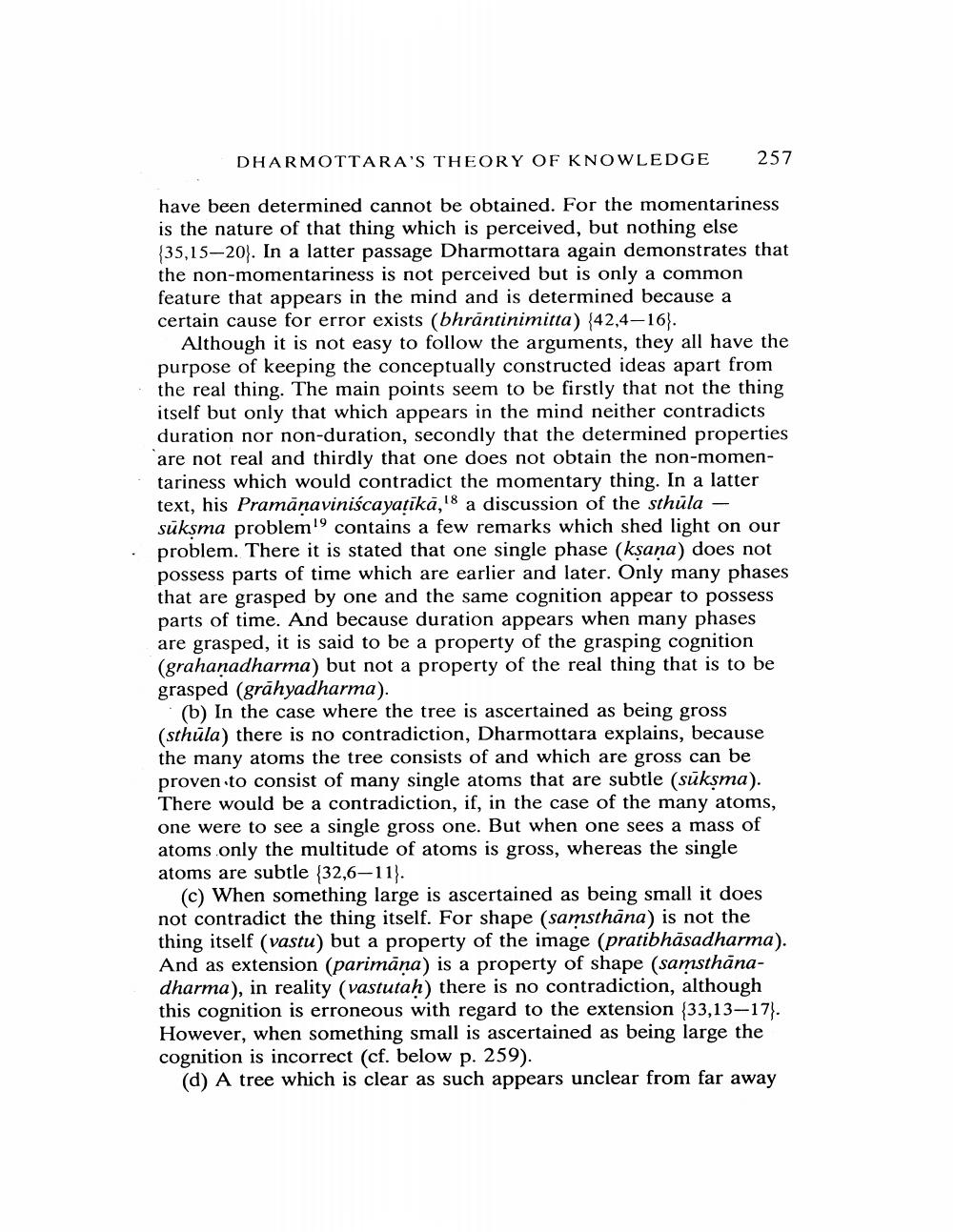________________
DHARMOTTARA'S THEORY OF KNOWLEDGE
257
have been determined cannot be obtained. For the momentariness is the nature of that thing which is perceived, but nothing else {35,15-20). In a latter passage Dharmottara again demonstrates that the non-momentariness is not perceived but is only a common feature that appears in the mind and is determined because a certain cause for error exists (bhrāntinimitta) (42,4-16).
Although it is not easy to follow the arguments, they all have the purpose of keeping the conceptually constructed ideas apart from the real thing. The main points seem to be firstly that not the thing itself but only that which appears in the mind neither contradicts duration nor non-duration, secondly that the determined properties are not real and thirdly that one does not obtain the non-momentariness which would contradict the momentary thing. In a latter text, his Pramānaviniscayaţikā,18 a discussion of the sthula – sūksma problem!' contains a few remarks which shed light on our problem. There it is stated that one single phase (ksana) does not possess parts of time which are earlier and later. Only many phases that are grasped by one and the same cognition appear to possess parts of time. And because duration appears when many phases are grasped, it is said to be a property of the grasping cognition (grahanadharma) but not a property of the real thing that is to be grasped (grāhyadharma).
(b) In the case where the tree is ascertained as being gross (sthüla) there is no contradiction, Dharmottara explains, because the many atoms the tree consists of and which are gross can be proven to consist of many single atoms that are subtle (sükşma). There would be a contradiction, if, in the case of the many atoms, one were to see a single gross one. But when one sees a mass of atoms only the multitude of atoms is gross, whereas the single atoms are subtle (32,6–11).
(c) When something large is ascertained as being small it does not contradict the thing itself. For shape (samsthāna) is not the thing itself (vastu) but a property of the image (pratibhāsadharma). And as extension (parimāna) is a property of shape (samsthānadharma), in reality (vastutah) there is no contradiction, although this cognition is erroneous with regard to the extension {33,13–17). However, when something small is ascertained as being large the cognition is incorrect (cf. below p. 259).
(d) A tree which is clear as such appears unclear from far away




